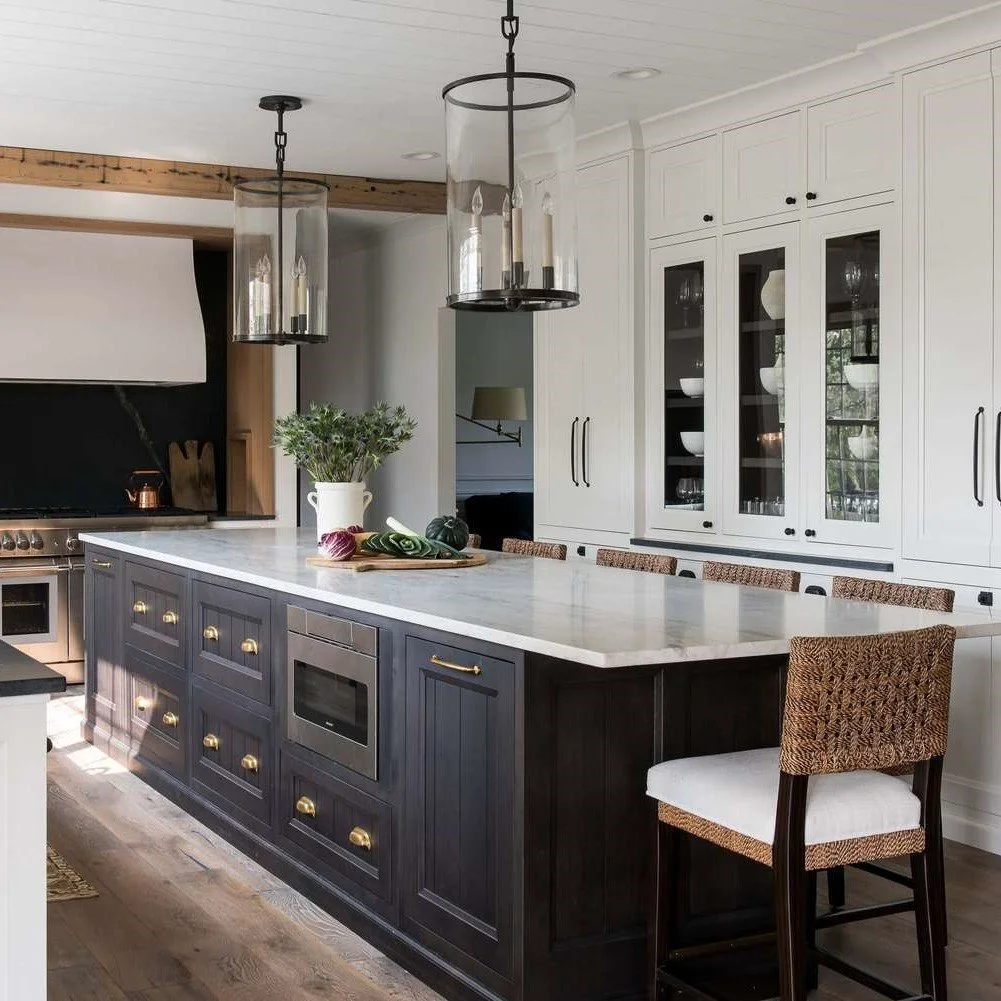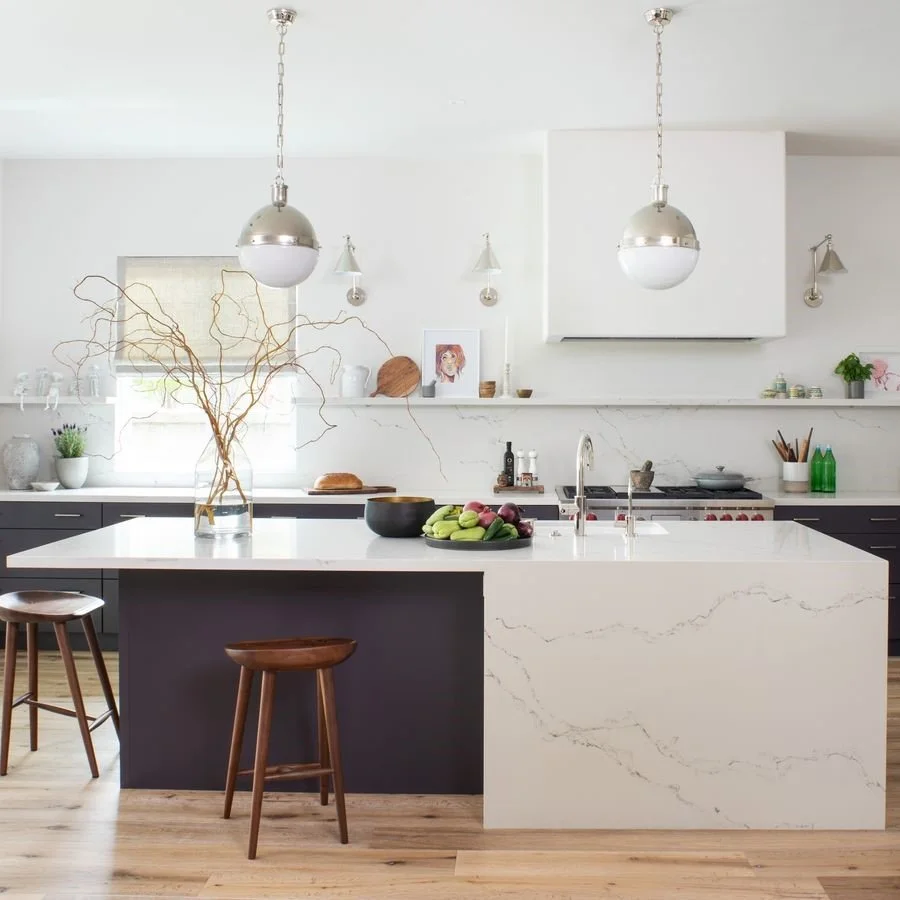Is the Island Over?
Food prep. Homework. Ironing board. Gift wrapping surface. Gathering place. Islands provide a casual alternative to a formal dining table and so much more. But there are rumblings. Some people are even saying islands are more trouble than they’re worth.
Islands date back to the early 19th century when wealthy European families (hello Downtown Abbey) would install a worktable in front of the hearth or stove where cooks prepared the meals.
Back then, families rarely visited the kitchen. These days bulky islands still exist—only now, families do hang out in kitchens. So is the kitchen island still practical? Is it still popular? House Beautiful recently brought in three experts to settle the matter.
Mimi Meacham, Founder, Marian Louise Designs
“Whether it’s breakfast for the kids or girlfriends chatting while you’re cooking, kitchen islands create definition in an open concept space. They add plentiful counter space for prepping meals, packing lunches and decorating cookies.”
Carisha Swanson, Market Director, House Beautiful
“They’ll continue being integrated into kitchens but their functionality might shift. The island may have already started trending back to being fully functional, no seating. They may simply come to serve as extra storage in large kitchens or a hiding spot for appliances.”
Sarah Blank, Principal Designer, Sarah Blank Kitchen & Bath
“You need 45-inch walkways all around an island. Remember to take the countertop overhang into consideration. If there are stools, you need 48 inches, minimum. Your kitchen needs to be big and open for a kitchen island to really be useful. That said, there has never been a downside to an adequately designed island.”
Well, that settles that, right? Not so fast. An island is great when it is properly suited to the space, but an island is by no means a requirement. In many cases, it may actually create friction in the kitchen.
Before installing an island, ask yourself, “Does my kitchen really need this?” If the answer is “Probably not,” skip it. An island may offer room to chop, stir and dice, but if your kitchen is on the smaller side, it will take up more space than it gives. And down the road, buyers will respond better to a kitchen with good flow and no island than one that sacrifices good design for the sake of an island.




